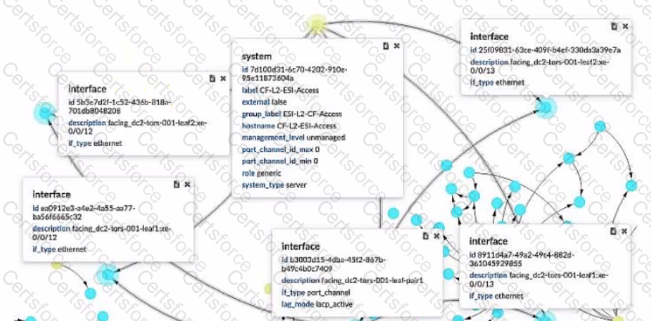Probes are the basic unit of abstraction in Intent-Based Analytics (IBA). They are used to collect, process, and analyze data from the network and raise anomalies based on specified conditions. Probes are composed of processors and stages that form a directed acyclic graph (DAG) of data flow. The following statements are correct about probes:
A. Default probes can be cloned, modified, and saved. This is true because Apstra provides a set of default probes that cover common use cases and scenarios. These probes can be cloned and modified to suit the specific needs of the user. The modified probes can be saved as new probes with different names and descriptions. This allows the user to customize and extend the functionality of the default probes.
D. Default probes are enabled, based on the intent for a blueprint. This is true because Apstra enables or disables the default probes automatically based on the intent of the blueprint. The intent of the blueprint is the high-level description of the desired state and behavior of the network. Apstra uses the intent to determine which default probes are relevant and applicable for the blueprint and enables them accordingly. For example, if the intent of the blueprint is to deployan EVPN-VXLAN fabric, Apstra will enable the default probes related to EVPN-VXLAN, such as EVPN-VXLAN Anomaly Detection, EVPN-VXLAN Fabric Health, and EVPN-VXLAN Fabric Validation. The following statements are incorrect about probes:
B. Only the variable parameters for default probes can be edited and saved. This is false because the user can edit and save any parameters for the default probes, not just the variable ones. The variable parameters are the ones that depend on the network topology, devices, or configuration, such as device names, interface names, IP addresses, VLAN IDs, etc. The user can also edit and save the fixed parameters, such as the duration, threshold, condition, etc. However, the user cannot edit and save the default probes directly. The user must clone the default probes first and then edit and save the cloned probes as new probes.
C. All default probes are enabled for all blueprints. This is false because Apstra does not enable all default probes for all blueprints. Apstra enables the default probes based on the intent of the blueprint, as explained above. This means that only the default probes that are relevant and applicable for the blueprint are enabled. For example, if the intent of the blueprint is to deploy a BGP IP fabric, Apstra will not enable the default probes related to EVPN-VXLAN, since they are not relevant for the blueprint. The user can also manually enable or disable the default probes as needed. References:
Probes
Create Probe
Intent-Based Analytics Overview
